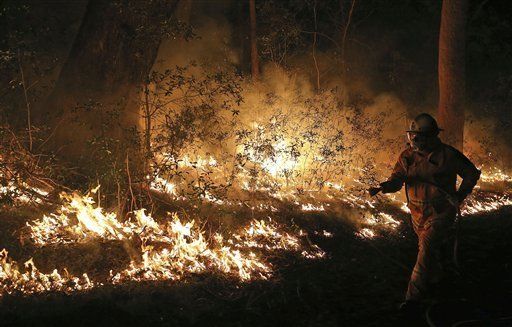
This was the scene outside Canberra a couple of weeks ago... since then Australia has gone deeper into Summer and temperatures have plunged to freezing.
Parts of southern New South Wales and the Australian Capital Territory endured their coldest November night in over forty years, with the region set to chill again tonight.
The ACT saw some of the coldest temperatures, with Canberra Airport dipping to -1.5 degrees, its coldest November night since 1970. Tuggeranong fell to a chilly 1.2 degrees, its coldest November night in a decade.
In NSW, Goulburn Airport dipped to -3.1 degrees and Thredbo -6.1 degrees, the coldest November night since 2006.
The unseasonably cold night was caused by a variety of factors. Firstly, a gusty cold front moved across the region yesterday, leaving behind a pool of cold air. Overnight, a high pressure system moved in, causing winds to ease as well as clear skies, allowing the mercury to plummet.
This high will continue to bring similar conditions tonight, allowing for the region to shiver through another cold night.
Canberra is expected to see it dip to zero tonight, and if this occurs, will be the coldest pair of November nights on record. Thredbo is expected to reach minus five, which would be its coldest pair of November nights since 2006.

Comment: This article adds one more piece to the newly emerging consensus on the direction that our climate seems to be heading. Those scientists who carefully observe the reality on the ground and scrutinize the available facts see what is coming our way in the not so distant future: the return to an Ice Age.